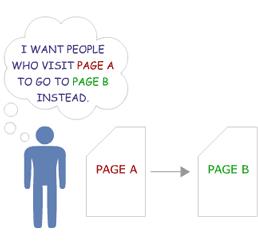Redirect Strategy for your business
Tabla de contenidos
A redirect is used to send both users and search engines from one URL (Page A) to a different URL (Page B).
From a SEO perspective, redirects are key in order to maintain the website’s domain authority and organic rankings. What does this mean? Well, this means that before we redirect from page A to page B, we should first think about how many keywords Page A has indexed on Google and how much traffic those keywords are driving to our website.
If you finally decide redirecting from Page A to Page B, it does not mean that you are going to lose the traffic, but you may if you do not use the right type of redirect that your SEO team recommends.
301 Permanent Redirect
This is our favorite kind of redirect, because it passes between 90-99% of link juice (ranking power) to the redirected page. Let’s put it into practice, for example, example.com permanently redirects (301) to example/home. This redirected URL (/home) retains the search engine authority and rankings of both URLs.
Most of the time, the SEO team will recommend using a 301 redirect to the CCNA sites in order to maximize domain authority. The main reasons to use 301 redirects are:
- To avoid 404 errors. It is important to use a 301 to redirect pages with a 404 error to a page that is working properly (200 status). The SEO team will help you to determine the ideal page to redirect to.
- Most people would consider these the same URLs (example.com & www.example.com). Technically, these two URLs are different and search engines treat them as independent URLs. The SEO recommendation is to use a 301 redirect from www.example.com to example.com.
- We can use a 301 redirect to drive traffic from different URLs to the new webpage. For example, if your brand stops selling a product, you will want to update the website, because that product is not going to be available anymore. Instead of deleting that product from the website, a SEO recommendation is to use a 301 redirect from an old product to a similar product. Therefore, you will not lose the traffic coming from that old product.
- A 301 redirect is a good option if you decide to rename or rebrand your brand and/or website or if you decide to host the website in a different domain.
302 Permanent redirect
On the contrary, the 302 redirects do not transfer link juice (ranking power). In most of the cases, the SEO team is not going to recommend using 302 redirects. On the right table, you can see the number of 302 redirects per brand that need to be fixed. The way to fix them is by using 301 redirects instead in order to pass that link juice and maintain the rankings in Google.
302 redirects should be used only when the new page is temporary and you know with certainty that that page is going to be removed in the short term (e.g. A/B testing for functionality or design). Take into account that the old URL (Page A) is going to show up in search engines instead of the new URL (Page B), possibly damaging the keyword rankings.
Conclusion
This is a very delicate topic, because if the wrong type of redirect has been set up search engines may become confused resulting in a loss of traffic. That is why it is important to work closely with the SEO team to help determine the impact of redirection in search engines.










